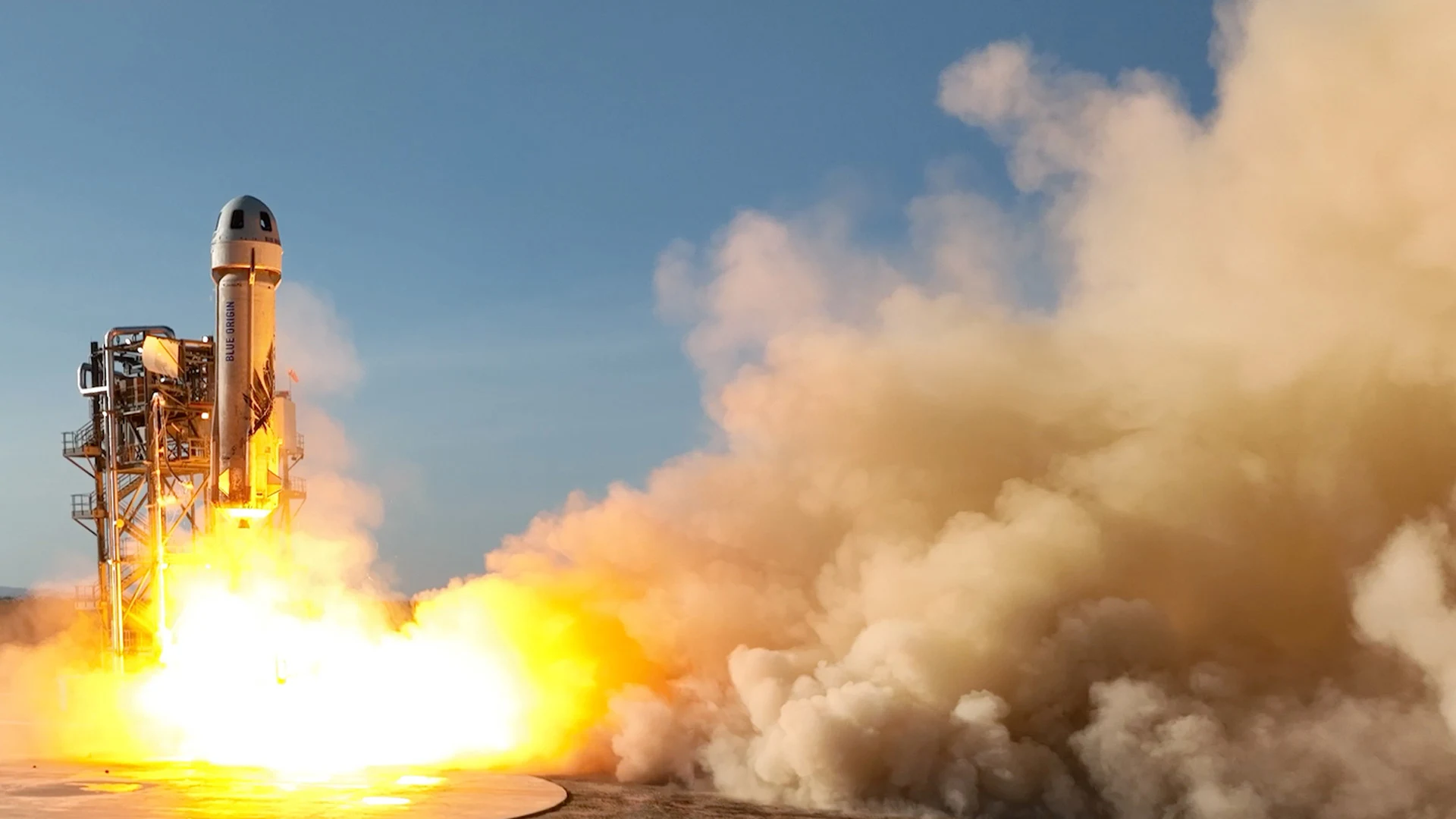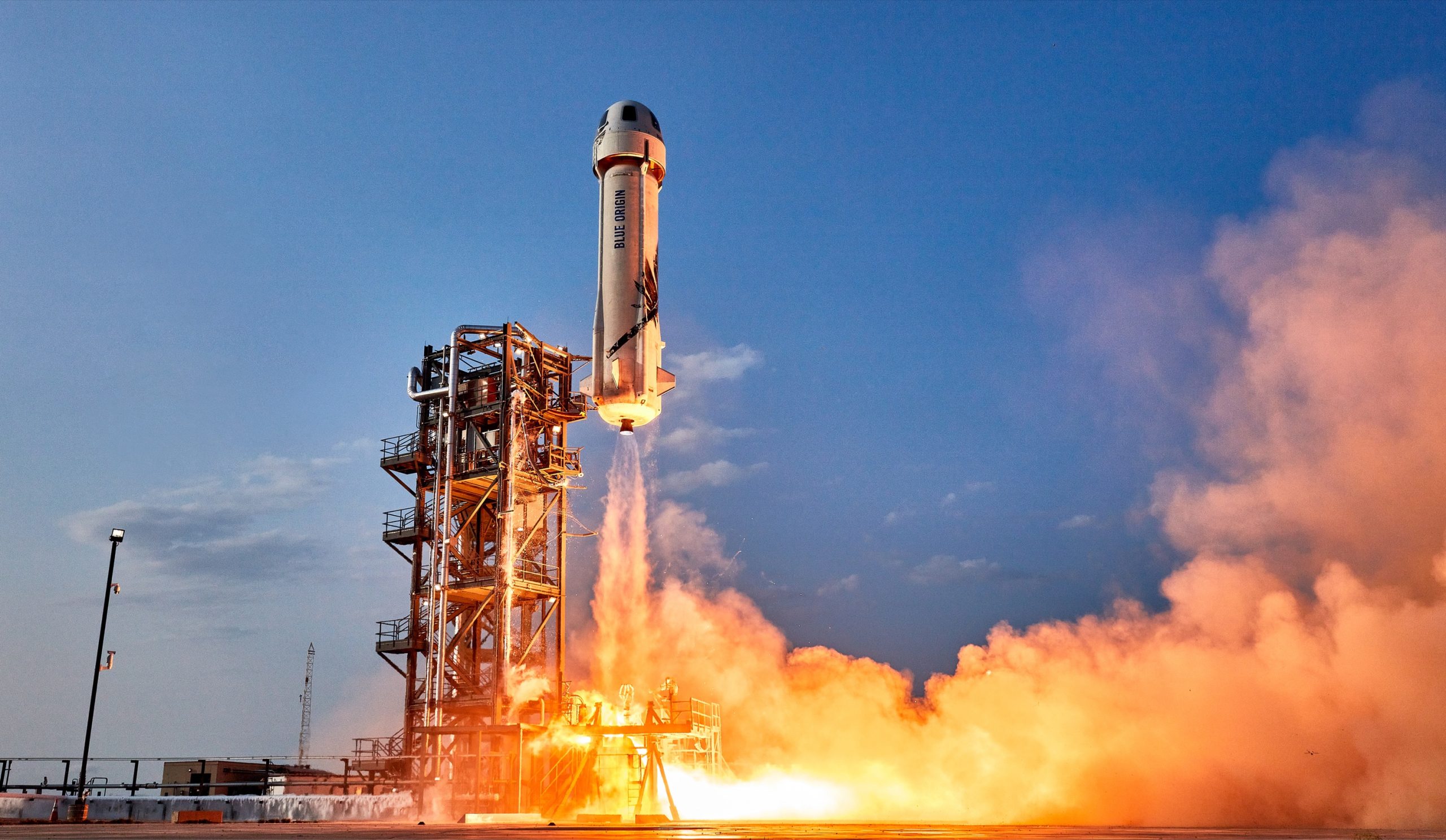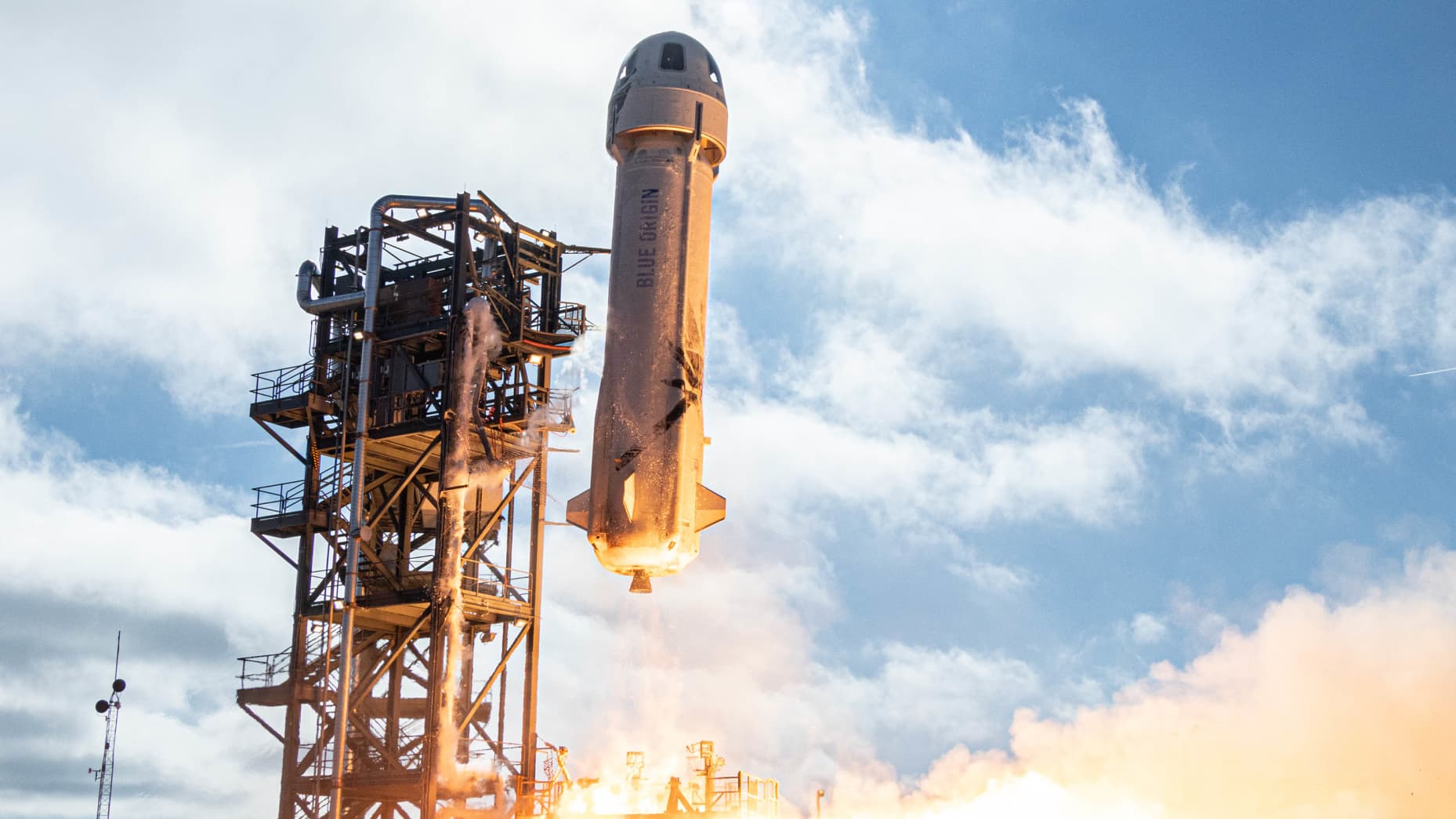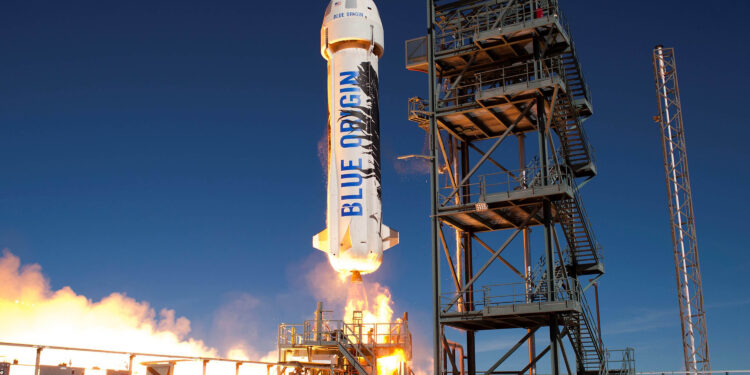In the sprawling deserts of West Texas, Blue Origin’s latest endeavour in space exploration took flight, albeit shrouded in an unusual veil of secrecy. On a brisk Wednesday morning, the aerospace company’s New Shepard rocket soared into the sky, marking a pivotal moment for its burgeoning space travel ambitions. Yet, the post-launch period has been met with a puzzling lack of detail from the Jeff Bezos-owned enterprise, sparking curiosity and speculation among space enthusiasts and industry observers alike.

A New Chapter with Old Questions
This latest mission, dubbed NS-27, represented the inaugural flight of the second New Shepard vehicle engineered to transport human passengers to the edge of space—though not quite into orbit. Taking off at approximately 11:30 AM, this mission was a critical test for Blue Origin, which had experienced a series of minor delays due to technical issues in the weeks preceding the launch. However, despite the successful launch, Blue Origin has been notably reticent about the specifics of this flight. Traditionally transparent with flight data, the company chose not to release detailed flight statistics this time, deviating from its usual practice. According to a report by SpaceNews, the spacecraft achieved a peak altitude of 63.6 miles, slightly underperforming compared to a previous mission’s 65.4 miles. The company briefly commented that the “flight performance was nominal and on target for this shakeout mission,” without further elaboration on the lower altitude.

The Evolution of New Shepard
Central to this mission was the debut of Booster 5 coupled with the RSS Kármán Line crew capsule, named after the recognized boundary that demarcates the Earth’s atmosphere from outer space. Blue Origin has emphasized that the Kármán Line capsule boasts enhanced performance and reusability compared to its predecessors, which have collectively completed eight crewed flights. The lead-up to this landmark flight was not without its hurdles. Initially scheduled for October 7, the launch was delayed due to a technical glitch and later postponed again owing to a GPS discrepancy. However, on the day of the launch, the separation of the rocket capsule stack occurred flawlessly about four minutes after liftoff. The booster executed a precise return to the launch site, culminating in a controlled landing, followed by the capsule’s descent back to Earth under parachutes, landing gracefully in a designated desert area.

The Payload and Promise
NS-27 was not merely a display of rocketry. The mission was laden with a dozen payloads, including five mounted on the booster and seven within the capsule. These payloads are pivotal, carrying advanced navigation systems intended for both New Shepard and its larger counterpart, the New Glenn heavy-lift rocket, as well as LIDAR sensors slated for future lunar missions. Such technological advancements underscore Blue Origin’s commitment to its long-term vision for space exploration. Despite the achievements of NS-27 and its contribution to Blue Origin’s portfolio, the company’s decision to withhold detailed launch data remains an enigma. This opacity is particularly striking given the firm’s history of a more open communication strategy and could be a strategic pivot or a cautious approach in response to past challenges, including the six-month grounding of New Shepard following a mishap with its flagship vehicle over two years ago. As Blue Origin continues to forge ahead in the competitive and ever-evolving arena of space travel, the industry and its watchers are left pondering what the future holds, not just for this ambitious company, but for the broader landscape of commercial space exploration. Whether this reticence is a temporary measure or a new norm remains to be seen, but it certainly adds a layer of intrigue to the ongoing narrative of humanity’s quest to conquer the final frontier.










